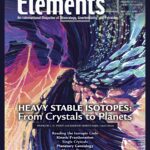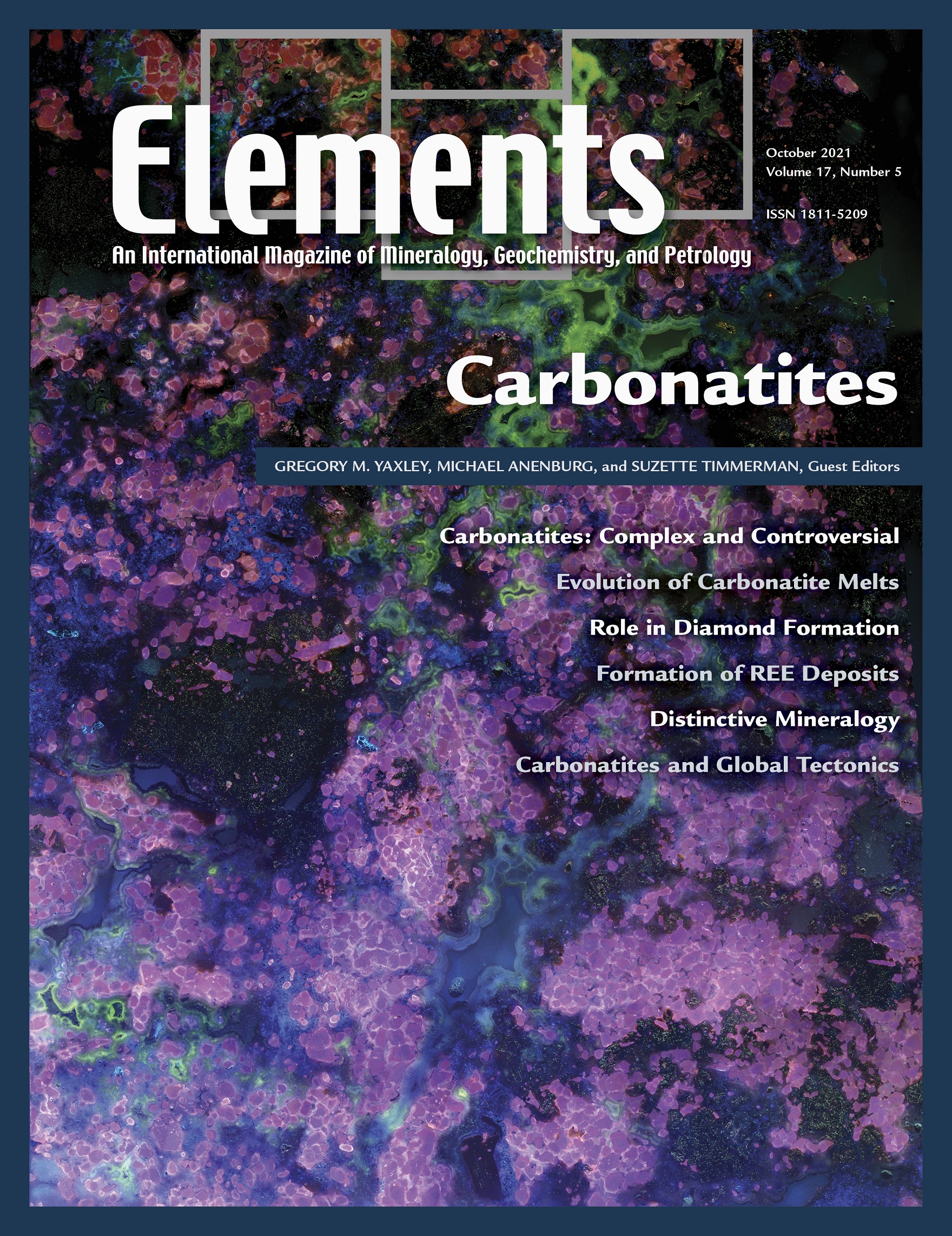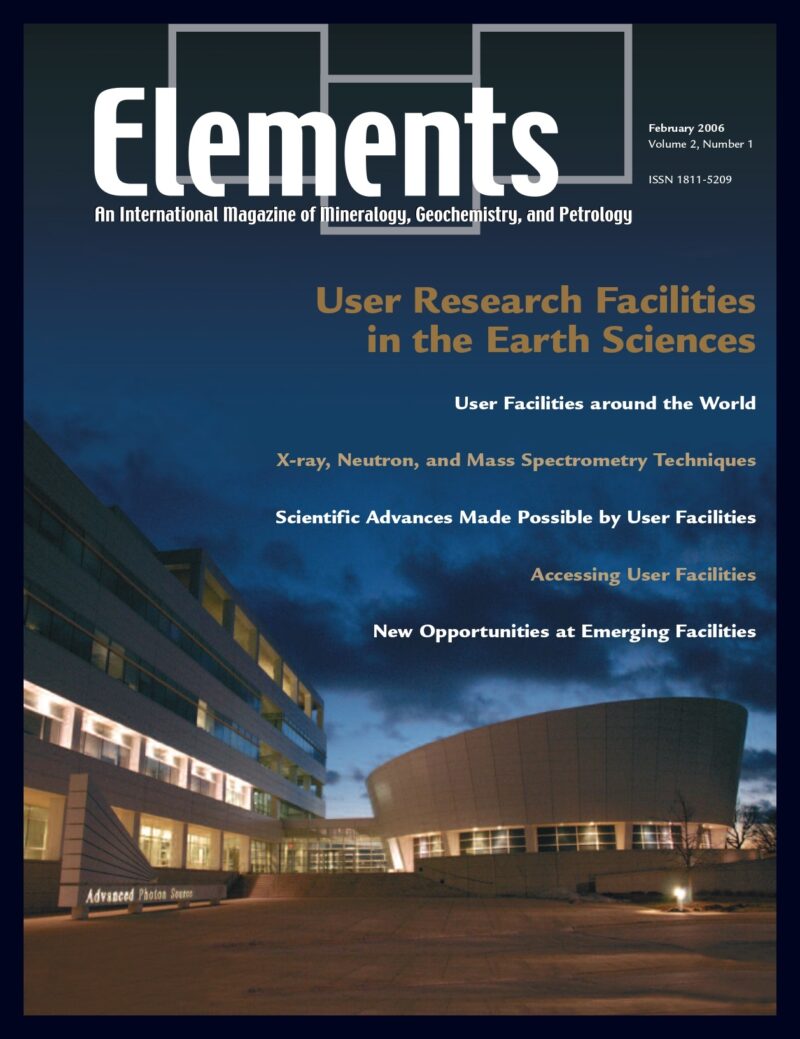
Hydrothermal Fluids, December 2020, Vol. 16, No. 6
June 28, 2024
Heavy Stable Isotopes: From Crystals To Planets, December 2021, Vol. 17, No. 6
June 28, 2024Carbonatites, October 2021, Vol. 17, No. 5
$20.00
Carbonatites are rare, but important, igneous rocks in the Earth’s crust. They are composed dominantly of the Ca, Mg and Fe carbonates, along with many other minor and trace components.
Carbonatites
October 2021, Vol. 17, No. 5
Carbonatites are rare, but important, igneous rocks in the Earth’s crust. They are composed dominantly of the Ca, Mg and Fe carbonates, along with many other minor and trace components. The popularity of high tech devices—smart phones, electric motors for zero-emission vehicles, wind turbines for renewable energy—has led to a renewed focus on these enigmatic carbonatite magmas, because to make these devices requires rare earth elements and the majority of the world’s rare earth elements are associated with carbonatites. In this issue, we explore the current models for how carbonatites form and evolve in the mantle or crust, the temporal and tectonic controls on their formation, why they are so enriched in rare earth elements, and what are their economically significant minerals.
Why You’ll Love Elements Magazine:
- Expert Contributors: Articles written by renowned researchers in the field of geoscience.
- Engaging Content: Join a community of readers who are passionate about Elements.
- Exceptional Quality: Each issue is printed on high-quality paper with stunning visuals and detailed illustrations that bring complex scientific concepts to life.
Order your copy of the October 2021 issue of Elements magazine today and delve into carbonatites.
Related products
-
Glasses And Melts: Linking Geochemistry And Materials Science, October 2006, Vol. 2, No. 5
$20.00Geological interest in studying melts stems from early recognition that melts play a fundamental role in determining the physical and chemical behaviour of magmas and magmatic processes. However, due to the inherent difficulties associated with working at high temperatures, much of the geological research over the last 30 years has used quenched melts or glasses as proxies for melts themselves.
-
Fluids in Planetary Systems, January 2005, Vol. 1, No. 1
$20.00Water and other geofluids play an important role in the geochemical and rheological evolution of the Earth and other bodies in the solar system. These fluids are responsible for the formation of hydrothermal mineral deposits, affect eruption behavior in volcanic systems and the geophysical properties of the mantle, and significantly affect the way in which rocks deform and fracture.
-
User Research Facilities In The Earth Sciences, February 2006, Vol. 2, No. 1
$20.00Earth scientists rely on effective access to user research facilities that provide state-of-the-art analytical instrumentation. This thematic issue focuses on some of these facilities and how to use them.




